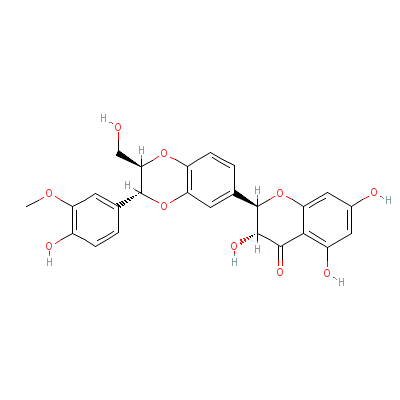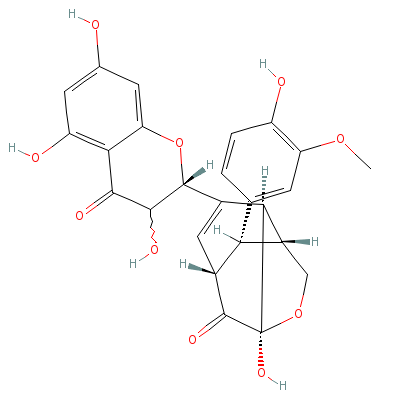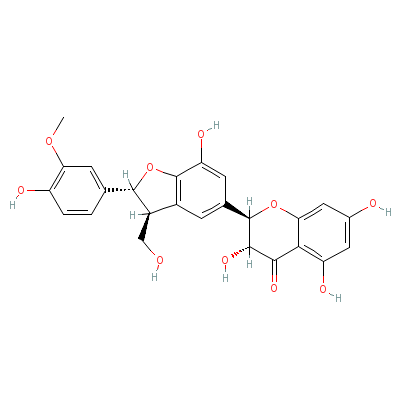Silybum marianum (L.)Gaertn. |
| |
|
|
Botanical Name |
: |
Silybum marianum (L.)Gaertn. |
English
Name |
: |
Milk Thistle |
Synonym(s) |
: |
Carduus marianus L. |
Family |
: |
Asteraceae |
| |
General Info
| Description |
 |
|
An annual, or biennial plant, glabrous, or but slightly wooly, growing to a height of 2 or 3 feet, and branching but little. Its leaves, which are shining and smooth above, are marked with white veins; the lower leaves are deeply pinnatifid, the lobes being broad and very prickly; the upper ones clasp the stem by prickly auricles, and are scarcely decurrent. The large, drooping flowerheads, with purple florets, are solitary and terminal upon the branches. The involucral bracts are very broad at the base and have a stiff, spreading leaf-like appendage, terminating in a long spine, and bordered at its base with prickles. The fruit is an achenium. |
| Herb Effects |
 |
|
Astringent, bitter, cholagogue, diaphoretic, diuretic, emetic, emmenagogue, hepatic, stimulant, stomachic and tonic (whole plant); |
Chemistry
| Active Ingredients |
 |
|
Silybin, silydianin and silychristin |
| Chemistry
of Active Ingredients |
 |
|
|
 |
Name |
CAS# |
IUPAC Name |
Formula |
Structure |
 |
|
| Silybin |
22888-70-6 |
(2R,3R)-3,5,7-trihyd
roxy-2-[(8R,9R)-9-(4
-hydroxy-3-methoxy-p
henyl)-8-(
hydroxym
ethyl)-7,10-dioxabic
yclo[4.4.0]deca-2,4,
11-trien-3-yl]chroma
n-
4-one |
C25H22O10 |

|
| Silydianin |
29782-68-1 |
Not Available |
C25H22O10 |

|
| Silychristin |
Not Available |
(2R,3R)-3,5,7-trihyd
roxy-2-[(2R,3S)-7-hy
droxy-2-(4-hydroxy-3
-methoxy-p
henyl)-3
-(hydroxymethyl)-2,3
-dihydrobenzofuran-5
-yl]chroman-4-one |
C25H22O10 |

|
|
Pharmacology
| Medicinal Use |
 |
|
For functional disorders of the liver and gallbladder, in cases jaundice, colitis, pleurisy, and diseases of the spleen, for loss of appetite, liver and gall bladder complaints including inflammation of the gall bladder duct, toxic liver disease and hepatic cirrhosis. |
|
|